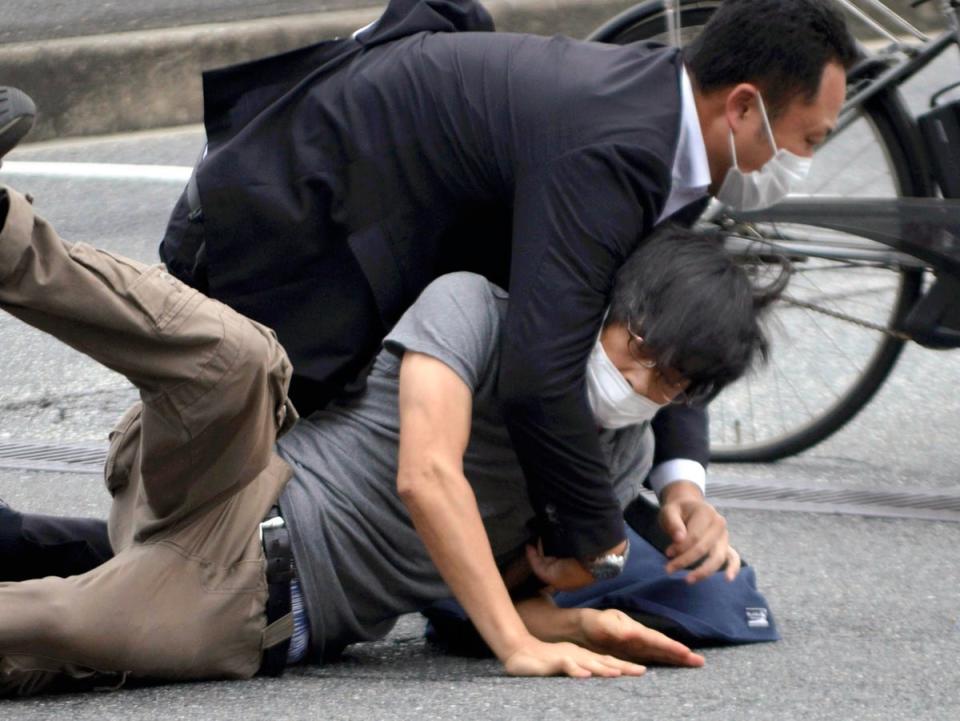Shinzo Abe shot dead: Everything we know about suspected killer Tetsuya Yamagami
- Oops!Something went wrong.Please try again later.
- Oops!Something went wrong.Please try again later.
Japan’s former prime minister, Shinzo Abe, has died after he was shot at a campaign event in the western city of Nara.
Mr Abe, 67, was giving a stump speech on behalf of a local Liberal Democratic Party candidate near a train station on Friday morning when two shots rang out, causing him to fall bleeding to the ground clutching his chest.
He was immediately airlifted to hospital, accompanied by his wife Akie, but officials were quick to warn he was not breathing and his heart had stopped.
Before he was pronounced dead, the country’s current PM, Fumio Kishida, gave an emotional press conference in which he called the attack “barbaric and malicious”, said that doctors were doing everything they could to aid the stricken politician and added that he was praying for his recovery “from the bottom of my heart”.
Mr Abe led Japan from 2006 to 2007 and again from 2012 to 2020, making him the country’s longest-serving premier, and was long known as an ultra-conservative foreign policy hawk and something of a divisive figure.
The grandson of another PM, Nobusuke Kishi, Mr Abe became known around the world for his aggressive “Abenomics” financial strategy but his arch-nationalism in office created regional frictions with China, South Korea, and North Korea.
He was forced to step down for health reasons two years ago before he could realise his most cherished goal of amending Japan’s US-drafted post-war pacifist constitution and was succeeded first by Yoshihide Suga and then Mr Kishida.

Police have already arrested a suspect, named as Tetsuya Yamagami, who made no attempt to run when leaped upon by security guards and voluntarily gave up his weapon, described as a large double-barrelled shotgun, likely homemade.
“Gun violence is very rare in Japan, and guns are extremely difficult to own. Political violence is also extremely rare,” said the BBC’s Rupert Wingfield-Hayes.
“The shooting of such a prominent figure is profoundly shocking in a country that prides itself on being so safe.”
Details on Mr Yamagami are scant at present, although he is believed to be 41, a resident of Nara and a veteran of Japan’s Maritime Self-Defense Force, serving between 2002 and 2005, according to local broadcaster NHK.
He has reportedly since told police he was dissatisfied with Mr Abe and intended to kill him.

“There was a loud bang and then smoke,” businessman Makoto Ichikawa, a witness at the scene, told Reuters, adding that the gun used was the size of a television camera.
“The first shot, no one knew what was going on, but after the second shot, what looked like special police tackled him.”
Additional reporting by agencies

